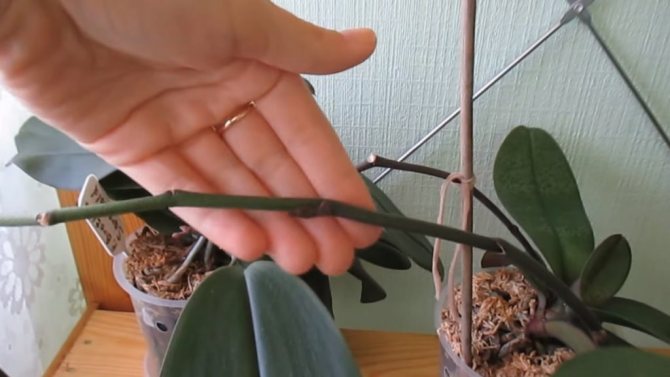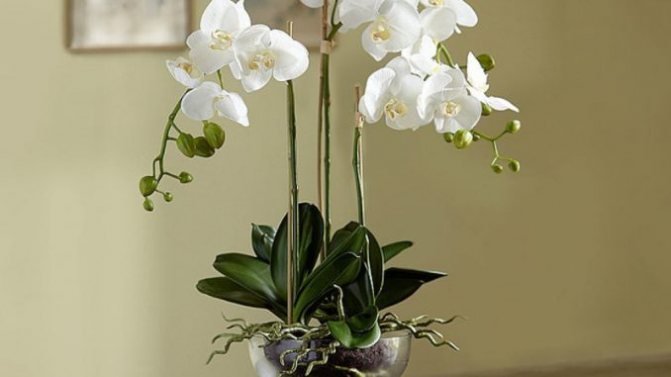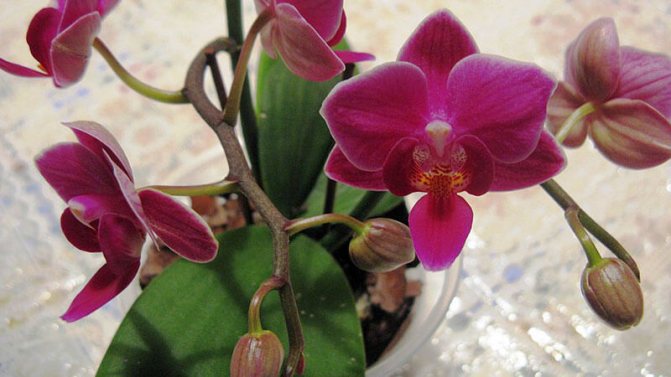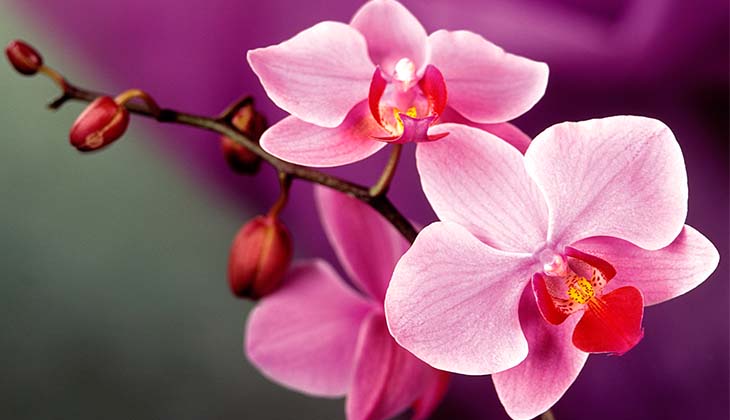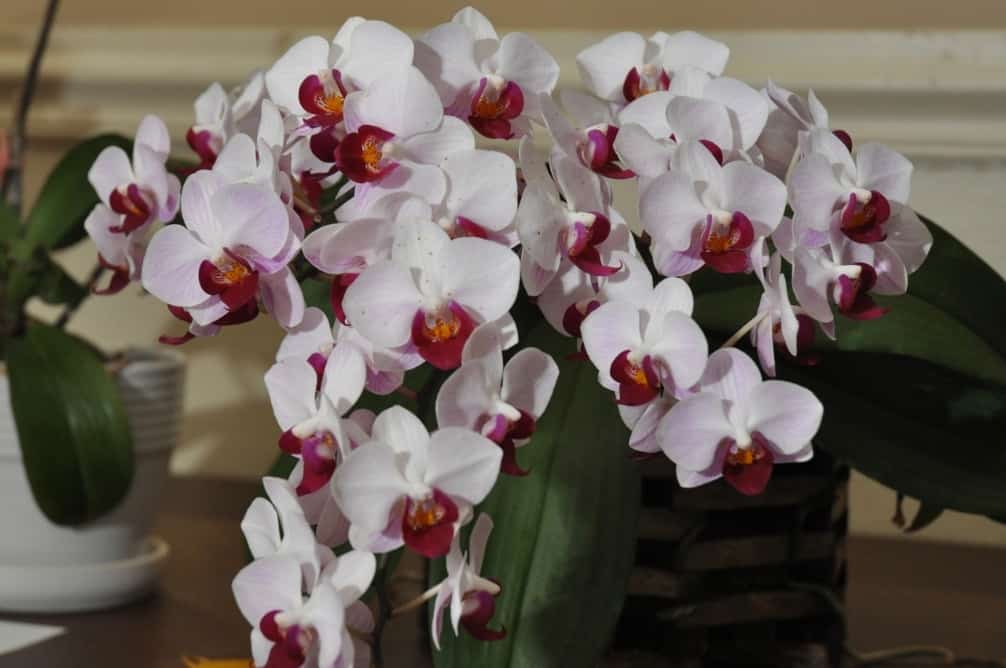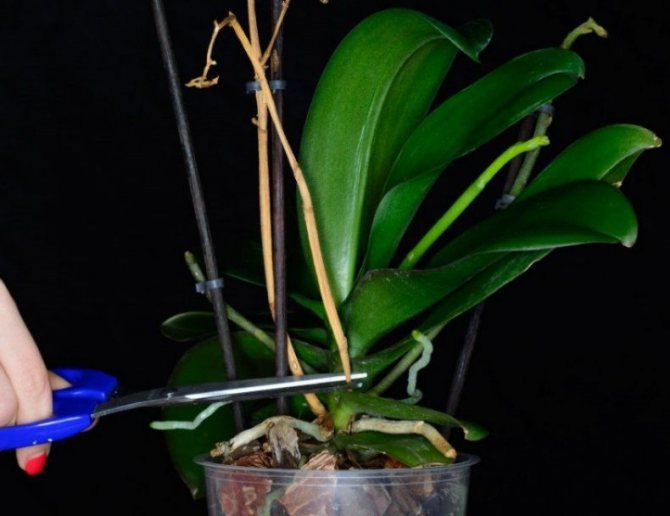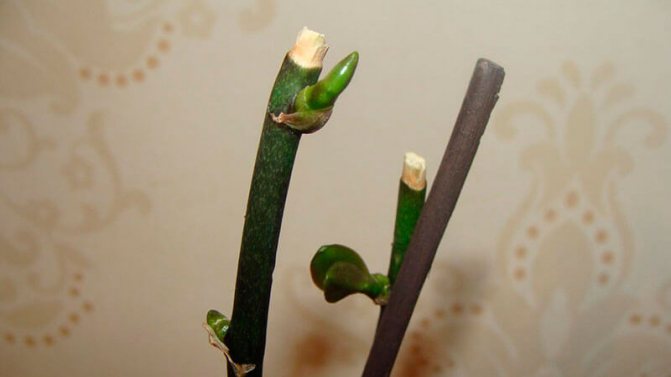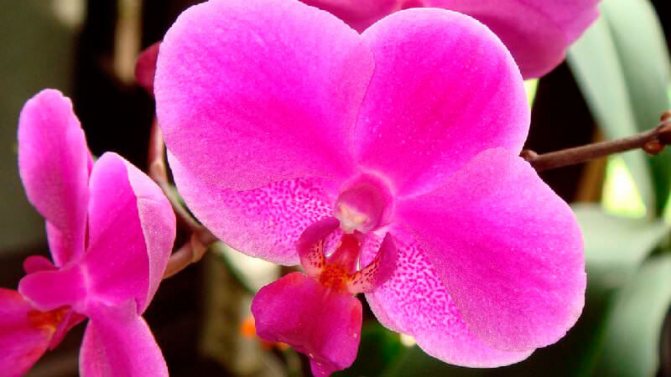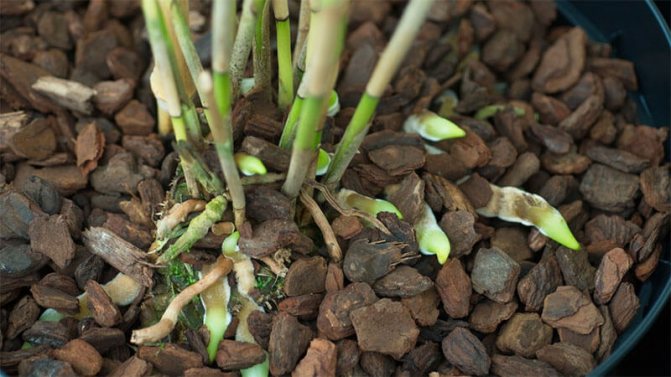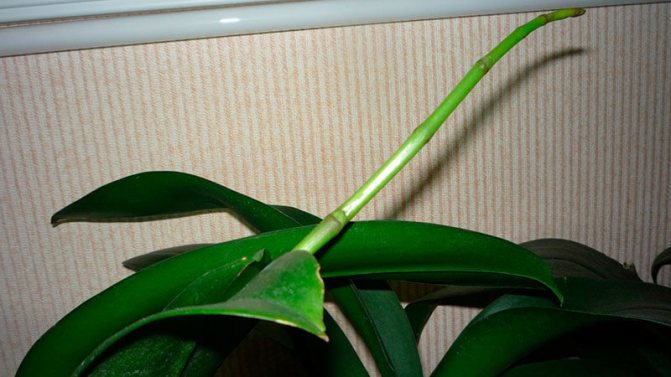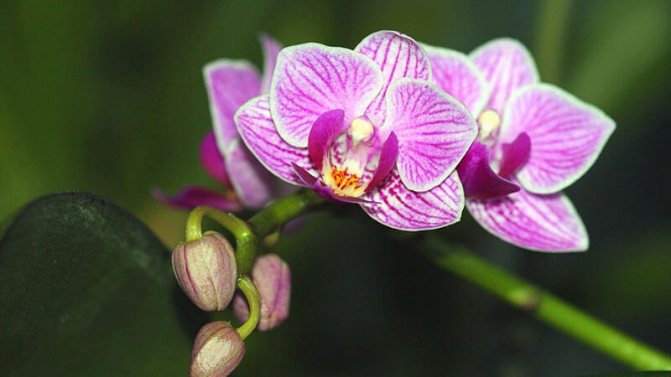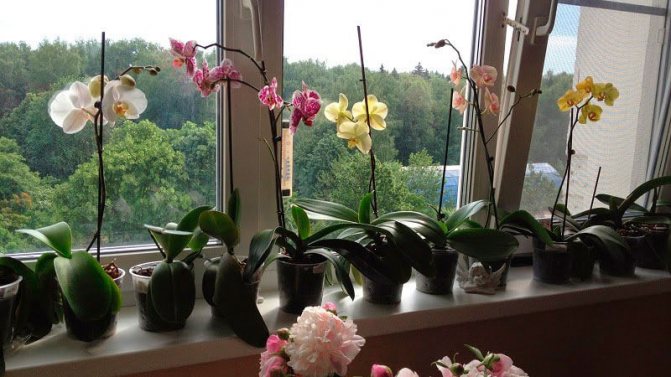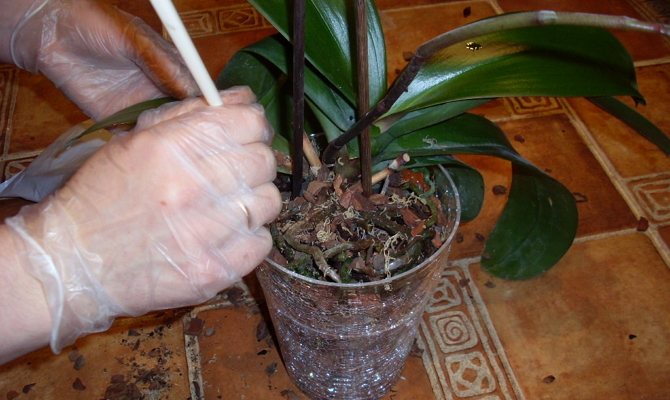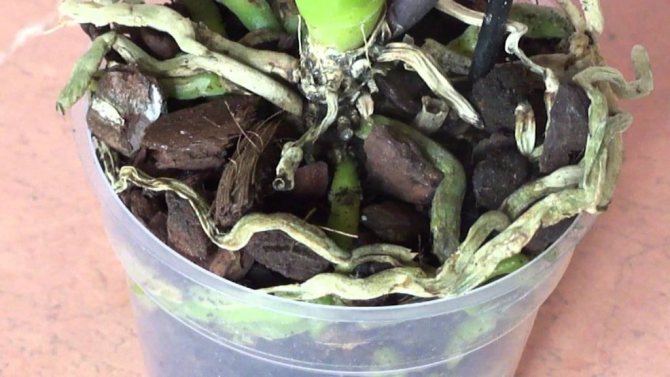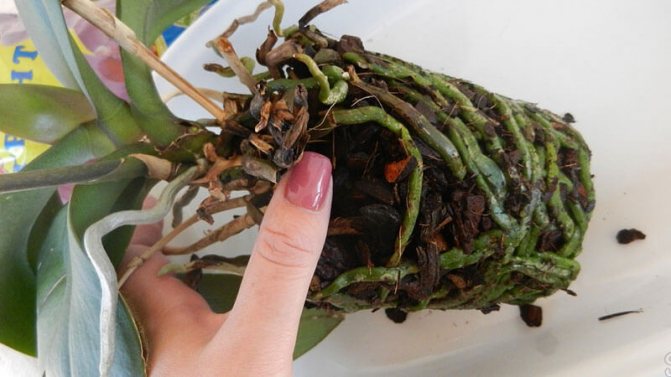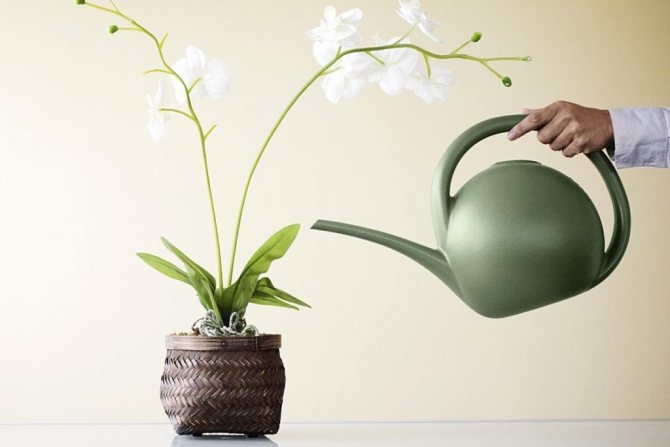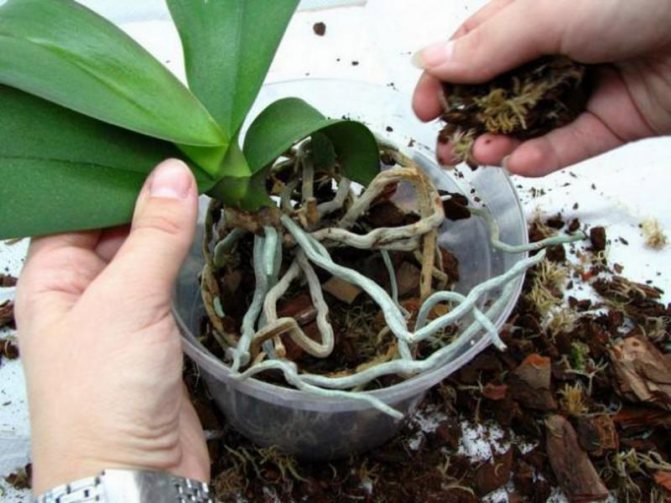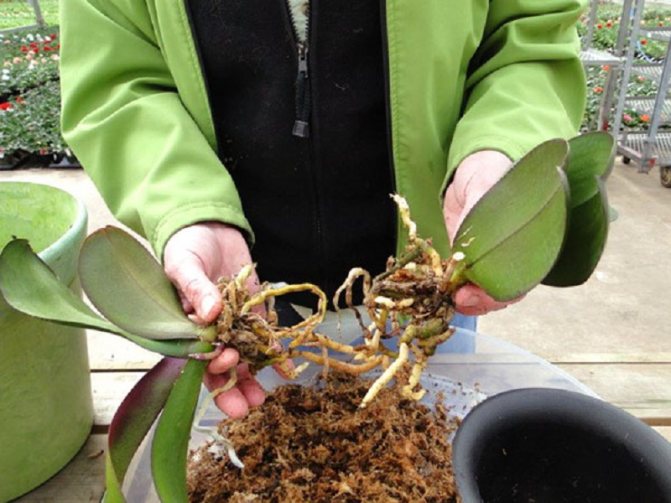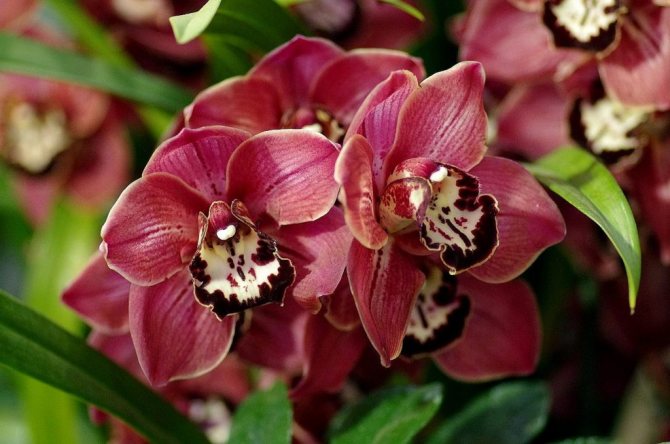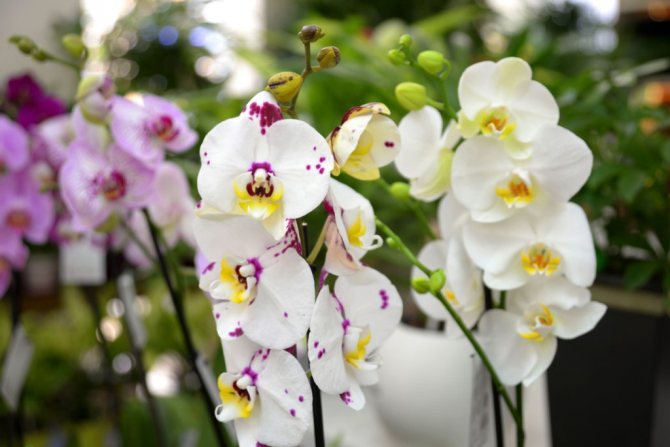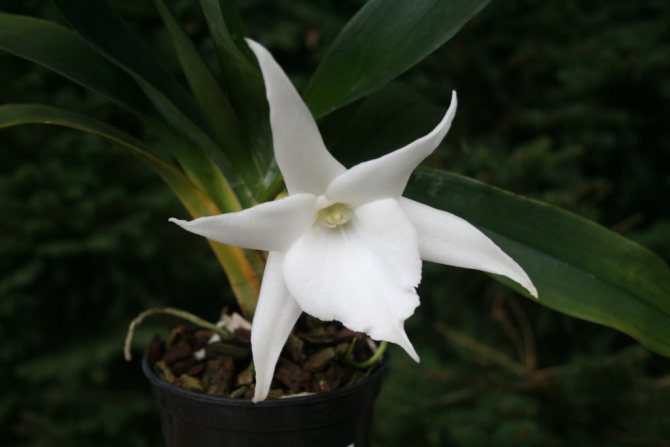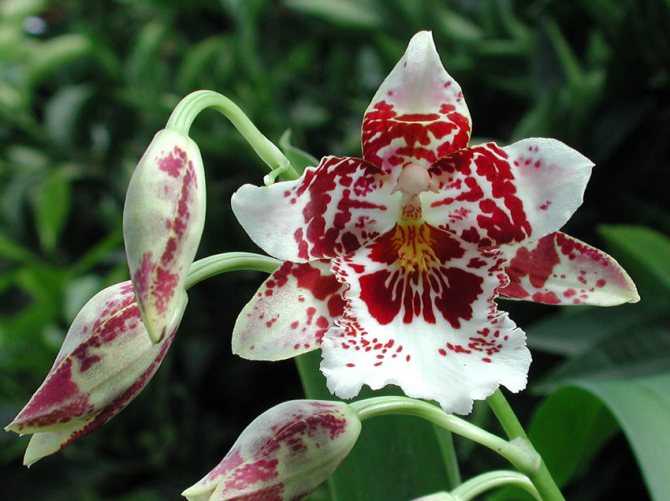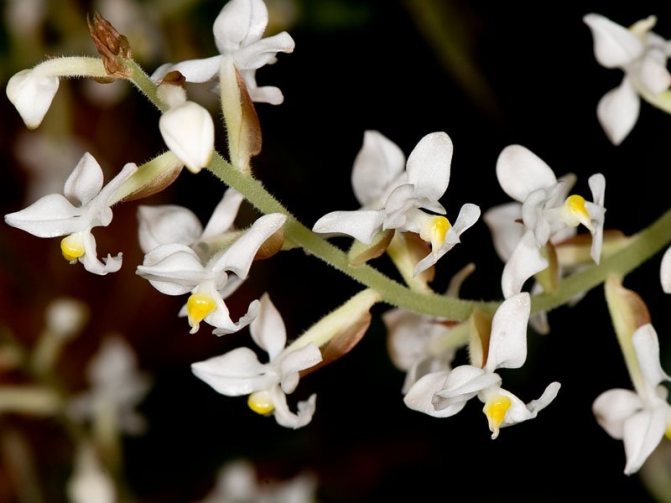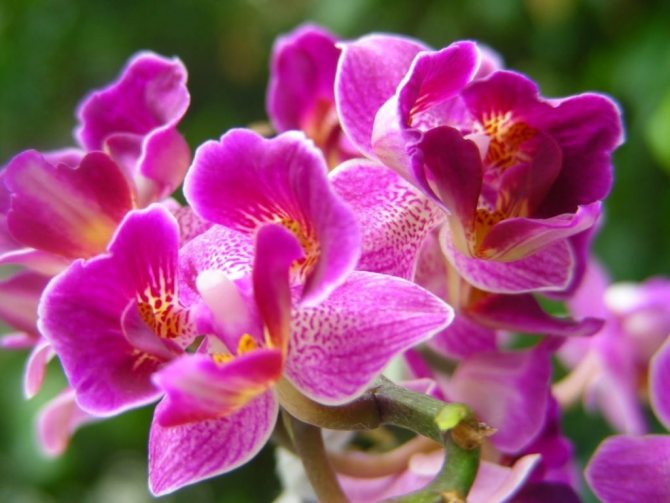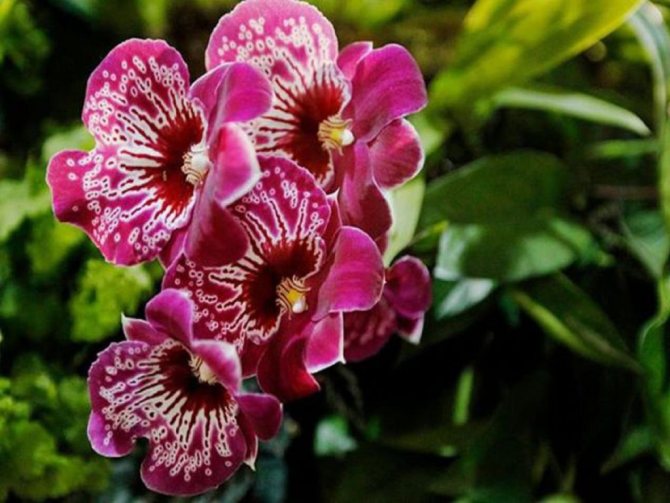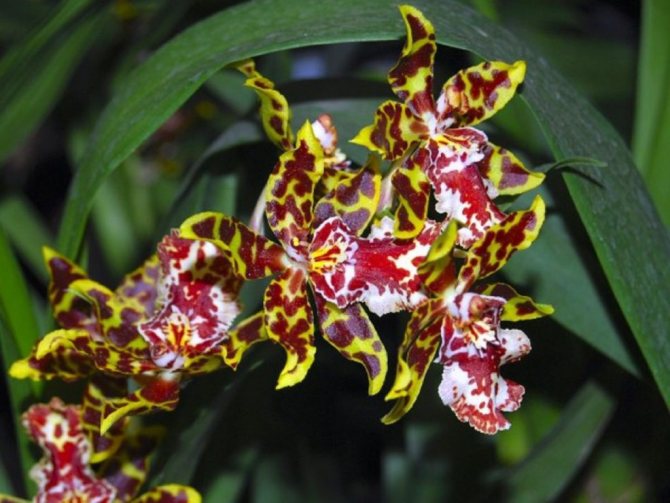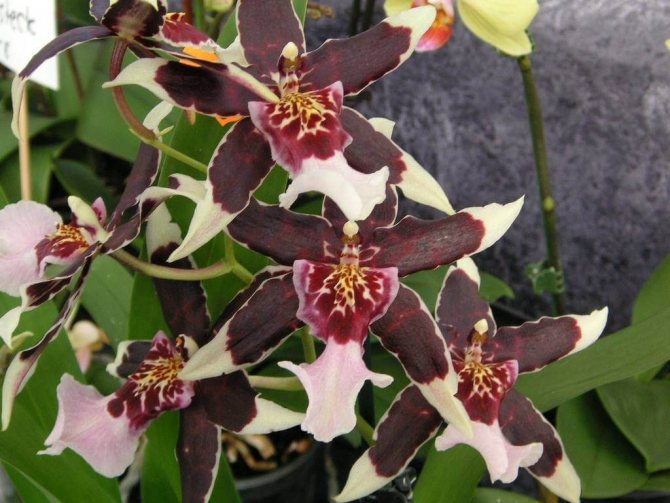Every florist wants his orchid to bloom as long as possible, and the intervals between flowering were minimal.
With proper care some varieties of phalaenopsis can bloom up to 2-3 times a year. Timely is important for good development and regular flowering. cut off the faded arrow.
If everything is done correctly, the plant will develop well and will thank you with regular and lush flowering.
What to do after flowering
The orchid has faded, what to do next:
- nothing;
- remove the arrow;
- cut the peduncle partially.
Nothing to do
When the orchid has faded, there is a chance that it will bloom again or be able to form babies. As a rule, a flower is unpredictable in its actions. Even an experienced florist cannot always determine whether a plant will release a new peduncle. Important! The more powerful the outlet, the greater the chances of re-blooming.
Delete arrow
Knowing the specific species, you can decide for yourself what to do with the orchid after flowering. The rules for removing an arrow are as follows:
| View | What to do with the arrow |
| The faded arrow is cut off completely, so the peduncle will no longer be active |
| Cut a peduncle with one wilted flower |
| The arrow is cut immediately after flowering, without waiting for the dry flowers to fall |
| Pruning is necessary only after the pseudobulb has completely dried out. |
Partial cropping
Solving the sacramental question "What to do after the orchid has faded?" can also be covered in partial cropping. This method is used to work with phalaenopsis.
Before removing the peduncle, the stem is examined for the presence of dormant buds, from which an additional peduncle or baby may appear. Cutting the stem is carried out one or more promising buds higher. A stump of 1.5-2 cm is left above the upper bud, otherwise the bud may dry out. After a short time, if the rules of care are followed, it will be clear whether the kidney has woken up.
Plant with a center arrow
Orchid appearance central arrow, that is, an arrow growing from a growing point means that the phalaenopsis has stopped growing in height and will no longer be able to grow leaves.
This does not mean that pruning after flowering will destroy the orchid.
Attention! In the presence of a central arrow at the base of the rosette, children are formed from the axillary buds, which means that there will be many peduncles, and the plant will delight with delightful beauty for a long time.
The acquisition of such an extraordinary orchid can be considered a success.
What are the benefits?
Now, in place of the outlet, such an orchid will have to form kids... They can appear from dormant buds, which are located in the axils of the lower leaves or on the peduncle itself.
You just have to waitwhen the children grow up a little and are ready for transplantation, which will allow you to get not one, but several plants at once.
Dormant period
The dormant state occurs in winter, after the flowering period. At this time, the plant slows down its growth and the metabolic rate decreases. Favorable conditions for wintering will be created by the following factors:
- the temperature regime should be lowered;
- feeding once a month;
- watering is reduced to ripen the growth and book the flower bud.
The plant goes into hibernation and, therefore, all faded flower stalks must be removed in order for the green friend to grow stronger and be able to please with its beauty next season.
Specific nuances
Has the orchid faded quickly or the peduncle has dried out prematurely? This can happen for two reasons:
- a problem with the root system - a transplant is needed;
- lack of moisture can lead to drying of the peduncle, which did not have time to bloom.
Important! The transplant is carried out only after the phalaenopsis orchid has faded.
Pruning rules
If you decide to cut off the arrow, then you must do it correctly:
- first of all, you should choose the right time (for each variety of orchids it is different) - for example, for Phalaenopsis, the optimal pruning time is October-November;
- pruning must be done with a sharp tool: a knife, garden shears (pruning shears);
- before trimming, the tool must be disinfected with a special antiseptic, but you can also use a chlorine solution;
- the cut point of the arrow must also be processed - pour wax or cover it with coal dust, which is easy to prepare from a crushed coal tablet;
- if the orchid in the previous pot is already cramped (it staggers or the roots come out, rotted), immediately after pruning, you can transplant the plant into a freer container.
When removing the green arrow, do not forget that it not only acts as a peduncle, but is also a vegetative organ, so do not throw away the shoot, but use it to get cuttings - put it in water or place it in a wet substrate, and, most likely, soon you will have another orchid.
Stress
The flower does not like stress, every slightest movement of the pot is traumatic for it. A stressful situation can both injure the plant and cause it to bloom. This could be cutting back on watering, or moving the pot to a cooler place. A living organism needs a sufficient amount of light for proper growth and development. If the plant has released a peduncle in the dark, then for successful flowering it needs additional lighting. Without illumination, the epiphyte stops developing, and the buds, not having time to open, can quickly dry out.
What to do with the arrow when the orchid has faded
To avoid stress, after flowering, part of the arrow is cut off so that children or new arrows appear. If the re-flowering has not come, and the time for transplanting has come, the substrate is replaced with the flower and transplanted into a new pot.
Is there a guarantee
There is no complete guarantee that the buds are activated and the orchid will bloom. Even with the most intensive care. In such a trimmed state, the peduncle can stay for a long time, and then still dry out. After all, the plant spends all its strength on nutrition of full-fledged peduncles.
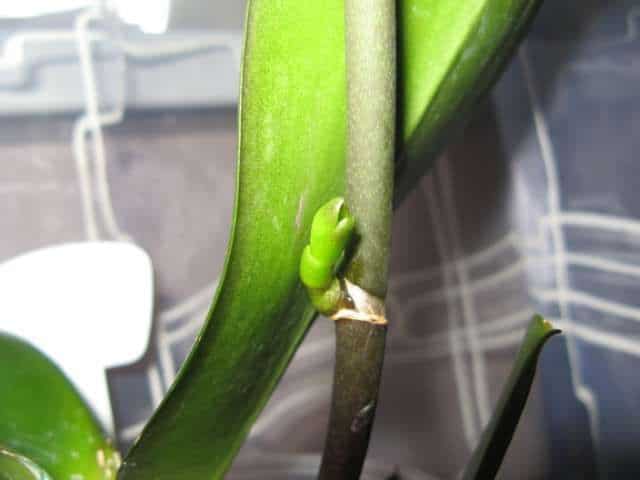
Another development option is the growth of "children" at the cutoff site. So, for example, phalaenopsis can give two or three shoots on one peduncle. In this case, it will be necessary to wait for the formation of several of their own roots. After that, the "baby" is transplanted into another pot.
According to some reports, in winter, with sufficient humidity in the room and a temperature of 16 to 18C, a peduncle may appear from the buds, in summer, at temperatures above 25C, a "baby" grows.
Post-flowering care
Caring for a flower during a dormant period includes:
- temperature and humidity conditions;
- watering rules;
- additional lighting
- top dressing.
Compliance with all the rules for care ensures that faded orchids will reward with their splendor next season.
Watering mode
During the dormant period, the plant is watered less often. The water should be warm and settled. It is important to ensure that the substrate is completely dry between irrigation. Excess moisture should flow out of the drainage holes, since in cold weather stagnant water can be detrimental to the flower.
To avoid hypothermia of the roots, the pots are recommended to be placed on a stand.
Roots
Due to stagnant water during a dormant period, root rot and the development of fungal diseases can occur. This period is optimal for examining the condition of the roots.
If the roots are rotten or dry, they are cut with sterile sharp scissors and the cut site is treated with an antiseptic. With a strong growth of the root system, the plant can be divided into parts for further planting.
Important! The roots are healthy and have a green color.
sunlight
Tropical beauties require a lot of sunlight to bloom annually. Considering that there is little sun in winter, pots with a plant are recommended to be displayed on the east or southeast side. In case of insufficient lighting, the flower needs additional artificial sources.
Lighting
A flower in winter needs additional lighting: it is necessary so that the leaves do not stretch out and fade. To do this, you can use 60 W phyto and fluorescent lamps. They are placed at a height of 20 cm from the plant.
Time to move
Once every 2-3 years, the green friend needs to be transplanted.
Prerequisites for transplantation:
- The potted substrate has settled and crumpled;
- Rotting of the leaf plate sets in and the smell of dampness appears;
- The root system is colored black or gray;
- The flower takes on a wilted look.
If one of the signs is present, this is the best time to move to a new planter. The transplant is carried out during the rest period.
Do I need to trim the arrow of an orchid after flowering
Rather yes. Partial pruning of the orchid after flowering will not be superfluous. Firstly, she will not spend her energy on a green peduncle, and secondly, it will acquire a more aesthetic appearance.
Each arrow contains dormant buds, from which buds, babies or new flower stalks can form. When the plant has faded, the part of the peduncle is removed, on which there are no living and dormant buds. If you cut off the arrow, a living organism will redirect all its forces to the development of a living kidney.
As a result of partial pruning, a new peduncle appears, which will soon bloom. Also, cut stems make it possible to reproduce.
Important! It depends on the variety and condition of the epiphyte whether it is necessary to trim the arrow after the orchid has faded.
Fertilizers
Plant feeding in winter is carried out maximum 2 times a month with special fertilizers for orchids. Short daylight hours, low air temperature prevent the rapid absorption of fertilizer.
Temperature and humidity
During the dormant period, it is not recommended to spray the plant, as this can cause fungal diseases, but dry air can also adversely affect the flower. Insect pests will appear on it, which will be difficult to get rid of in the future.
The optimum air humidity is 40%. To create comfortable conditions for orchids, you need to put a container of water next to the planter, place the pot on wet moss or expanded clay, or use a humidifier.
The optimum temperature for an orchid during the dormant period is 23 ° C during the day and 15 ° C at night. This temperature drop is important for the setting of flower buds. If the temperature is the same, then the living organism will instead build up green mass.
Author of the text: Marina Kucheryavaya
When should you transplant and how?
A transplant is required for two reasons:
- The need for a larger pot (the flower has grown).
- Substrate replacement (old substrate has turned to dust or rotted).
Transplant process:
- Removing the orchid from the pot. To do this, first immerse the pot in water at room temperature for 10-15 minutes.
- Root rinsing under running water in order to clothe pieces of the substrate adherent to the roots.
- Pruning roots to healthy tissue if diseased roots are found (heals the root system).
- Planting an orchid in a new substrate. To do this, place the plant in a pot and hold it with one hand, while gently adding the substrate with the other.
- Do not under any circumstances deepen the neck of the plant and do not damage the roots.
- Do not water the phalaenopsis for 2-3 days.
- Do not feed your orchid for 3-4 weeks after transplanting.
If done correctly, Phalaenopsis will bloom again in 3-6 months. If this does not happen, the plant needs stress. To do this, it is enough to rearrange the flower to another place and provide a sharp difference between day and night temperatures. But remember, such stimulation is appropriate only if all conditions of keeping Phalaenopsis are strictly observed.
How long should a flower rest?
The orchid is a peculiar and unpredictable plant, and each specimen has its own character. Therefore, there is no exact timing of the dormant period after flowering. Rest can last from a month to a year. To a large extent, the speed of recovery depends on the quality of care and the indoor climate.
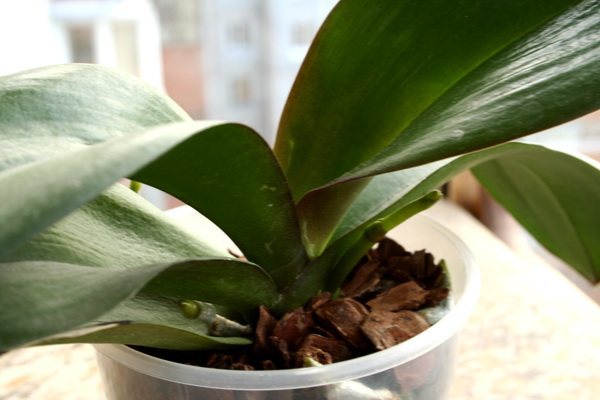

Important! In an effort to achieve rapid re-bud formation, impatient growers begin to artificially stimulate the awakening of the plant. As a result of improper actions, the plant may not have time to recuperate and will soon die.
Possible problems
What to do if the orchid has faded and began to dry?
Orchid can dry only under the condition of non-observance of proper care and unacceptable conditions for this type. Before or after flowering, it practically does not matter.
Drying of the peduncle is normal and requires pruning. If the plant gradually dries up by itself, then it is necessary to look for the reason in the following:
- too high room temperature, as a result of which the plant overheats;
- incorrect watering rules;
- poor quality or old substrate;
- excess concentration or overfeeding with fertilizers;
- pest exposure or disease.
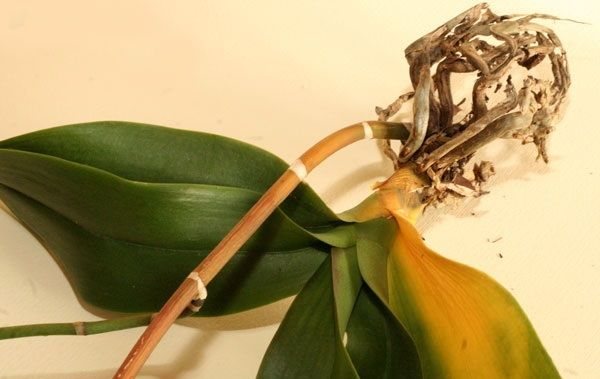

An orchid can dry out for many reasons.
Having found out and eliminated the cause, the flower will continue its development.
Leaves turn yellow and fall
Causes of yellowing and falling leaves in orchids enough. Each of the many types of orchid leaves have their own specific life cycle.
For some, it is a year, for others - 2, for others - up to 5 years. Therefore, yellowing of the leaf is often a natural aging.
The rest of the reasons are associated with growing conditions, proper care and diseases or the presence of pests.
The most common cause of yellowing is lack of lighting or direct sunlight on the foliage.
Overflow or overdrying of the root system, tightness of the pot, overdose of fertilizers, diseases - almost all the reasons due to which the leaves can turn yellow and fall off.
Some orchid species such as Dendrobium, leaves are shed annually. Therefore, the florist does not need to immediately panic. When this happened, you need to find out the cause and, if it is not related to the peculiarities of the species, eliminate it.
The peduncle turns yellow
The peduncle usually turns yellow after flowering and this is a natural process. And until it is completely dry, does not turn black, it is not recommended to touch it.
Important! The harmony of development and subsequent flowering is largely due to the nutrients and useful substances that the drying peduncle gives to the plant.
Another thing is if the drying of the peduncle is accompanied by the drying of the leaves. In this case, you need to pay attention to the correct care, conditions and illness.
Blooms no more
There can be many reasons:
- the orchid is dormant. Gaining strength, grows roots and leaves;
- inappropriate conditions and care: improper watering, inappropriate air temperature, little light, poor soil, etc.;
- acclimatization;
- orchid plants often behave very capriciously. If something is wrong, then they can be "capricious" for a long time.
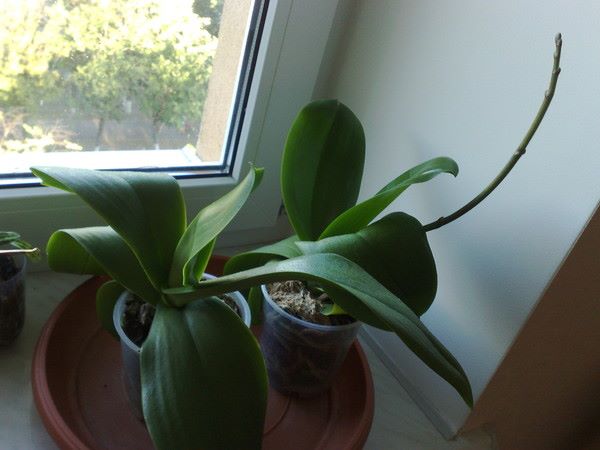

If there is no flowering, consider caring for the plant.
Experienced florists recommend creating stress for the plant in such cases (by lowering the temperature, reducing watering), and then give normal conditions with the required temperature drop and fertilize. Some use stimulants succinic acid showed itself especially well on orchids.


